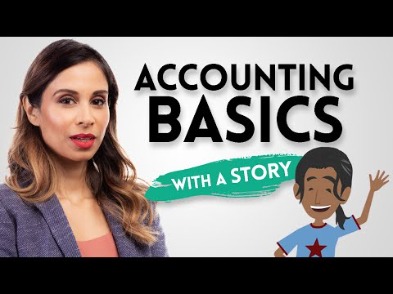
As such, exact amounts may not be accurately included on financial statements before the reconciliation process. When the business receives its bank statement, it can use the final amounts of interest and investment income to make adjustments and reconcile its financial statements. By comparing your company’s internal accounting records to your bank statement balance, you can confirm that your records are accurate and analyze the reasons behind any potential discrepancies. The analytics review approach can also reveal fraudulent activity or balance sheet errors. In this case, businesses what is the difference between negative assurance and positive assurance estimate the amount that should be in the accounts based on previous account activity levels. For lawyers, reconciliation in accounting is essential for ensuring that financial records are accurate, consistent, and transparent.
The Reconciliation Process
- HighRadius’ AI-based Record-to-Report solution that enables faster Financial Close and accurate, automated Account Reconciliation.
- After 60 days, the Federal Trade Commission (FTC) notes, they will be liable for « All the money taken from your ATM/debit card account, and possibly more—for example, money in accounts linked to your debit account. »
- Expenses or income not previously recorded must now be categorized and entered, and any mistakes need to be rectified promptly.
- It is possible to have certain transactions that have been recorded as paid in the internal cash register but that do not appear as paid in the bank statement.
Identify any transactions in the bank statement that are not backed up by any evidence. For example, the internal record of cash receipts and disbursements can be compared to the bank statement to see if the records agree with each other. The process of reconciliation confirms that the amount leaving the account is spent properly and that the two are balanced at the end of the accounting period.
Direct and Indirect Cash Flow

Common sources include deposits in transit that have not yet been deposited in your bank account, as well as bank fees that have been withdrawn by your bank but may have been missed in your company records. Begin with a side-by-side comparison of your bank account statement and your company’s accounting records. Check that your financial transaction records include all payments and deposits for the transaction period, as well as the final balance. By comparing the two statements, Greg sees that there are $11,500 in checks for four orders of lawnmowers purchased near the end of the month. These checks are in transit, so they haven’t yet been deposited into the company’s bank account. He also finds $500 of bank service fees that hadn’t been included in his financial statement.
It is possible to have certain transactions that have been recorded as paid in the internal cash register but that do not appear as paid in the bank statement. An example of such a transaction is a check that has been issued but has yet to be cleared by the bank. Also, transactions appearing in the bank statement but missing in the cash book should be noted.
Bank Reconciliation Process Flow
Also, check previous years’ audit reports to identify repetitive mistakes and actions recommended by the auditors. If needed, work with third-party finance consultants to identify gaps and put together a transformation plan for your finance department. By following these best practices, organizations can fortify their financial reporting and uphold robust accounting standards. HighRadius’ AI-based Record-to-Report solution that enables faster Financial Close and accurate, automated Account Reconciliation. If you answered ‘yes’ to all the questions above, your organization is pretty much ready to embrace AI.
A three-way reconciliation is a specific accounting process used by law firms to check that the firm’s internal trust ledgers line up with individual client trust ledgers and trust bank the purpose and content of an independent auditors report statements. For lawyers, this process helps to ensure accuracy, consistency, transparency, and compliance. Reconciliation in accounting is the process of comparing multiple sets of financial records (such as the balances and transactions recorded in bank statements and internal records) to ensure their correctness and agreement. Reconciliation in accounting—the process of comparing sets of records to check that they’re correct and in agreement—is essential for ensuring the accuracy of financial records for all kinds of businesses. For the legal profession, however, regular, effective reconciliation in accounting is key to maintaining both financial accuracy and legal compliance—especially when managing trust accounts. Some businesses create a bank reconciliation statement to document that they regularly reconcile accounts.
For instance, to reconcile a checking account, one would compare the bank’s statement with the company’s internal records. They would then adjust for charges, deposits in transit, and outstanding checks to reconcile the final balance. Effective reconciliation of bookkeeping accounts is essential for accounting for unearned rent maintaining accurate financial records. This segment details the best practices to ensure the integrity and accuracy of an organization’s financial data. To address bank errors, one must regularly scrutinize bank statements and transaction records.
Banks and retailers can make errors when counting money and issuing cash to customers as change. Variances between expected and actual amounts are called « cash-over-short. » This variance account is kept and reconciled as part of the company’s income statement. The accountant of company ABC reviews the balance sheet and finds that the bookkeeper entered an extra zero at the end of its accounts payable by accident.
